Pixel Art Water Shader
A pixel art style water shader for Godot 4.x, compatible with all rendering pipelines.
Features:
- Vertex waves
- Buoyancy system (Available in repository)
- 2 types of lighting: Realistic and flat
- Foam overlay system
This shader relies on outside scripts for full functionality such as buoyancy and syncing with a water_manager.
I highly recommend checking out the linked repository for the full usage and examples.
Foam System
The foam_mask uniform is intended to be used with a viewport texture from an orthographic camera that looks down at the water. Usage steps:
- create a SubViewport
- place a Node3D inside the SubViewport and a Camera3D as a child of that Node3D.
- Change the Camera3D to orthographic and set its size, ideally to a multiple of 2, ie: 64, 128, etc.
- Set the Camera3D to only see a specific layer, name this layer “Foam”
- Set the SubViewport size to a multiple of the Camera3D size.
- In the water shader, set the foam_mask_size to the Camera3D size
- Add in a mesh that is only visible on the layer you previously created and named “Foam”, make sure that all other cameras cannot see this layer.
- Add a material to that mesh that just outputs red.
- The shader should read the red in the mask as a place where foam should show up.
Beach Model:
“Cast Away Beach Diorama” (https://skfb.ly/opDrN) by Neil B is licensed under Creative Commons Attribution (http://creativecommons.org/licenses/by/4.0/).
Shader code
/*
Pixel Water Shader by: Taillight Games - contact@taillight.games
https://github.com/taillight-games/godot-4-pixelated-water-shader
MIT License
*/
shader_type spatial;
render_mode cull_disabled, world_vertex_coords, depth_draw_always, ambient_light_disabled, diffuse_burley;
// this must be set every frame in code for it to sync with the WaterManager
// if you don't need the time to agree with your code, just replace instances of this with TIME
uniform float sync_time;
varying vec3 triplanar_pos;
varying vec3 power_normal;
varying vec3 world_normal;
varying vec3 object_normal;
uniform float wave_speed = 0.05; // the speed of the vertex waves
uniform float caustic_speed = 0.01; // speed that the caustics noise texture is moved
uniform float edge_fade_power = 2.0; // controls the contrast on the opacity fading when objects are on the surface
uniform float transmittence = 0.04; // how much light transmits through the water
uniform float h_dist_trans_weight = 3.0; // how much does the horizontal distance from the position affect its depth
uniform vec3 transmit_color : source_color; // a color correction applied to the screen texture coming from under the water
uniform float depth_fade : hint_range(0.0, 0.5, 0.01) = 0.3; // the power of the depth fade
uniform float depth_fade_distance : hint_range(0.0, 100.0, 0.1) = 5.0; // the downward distance of the depth fade
uniform vec3 surface_albedo : source_color; // surface color on the top of the plane, in most areas this is overrriden by other colors, it will usually only be visible in shallow water
uniform vec4 surface_bottom : source_color; // the color of the underside of the water
uniform float opacity : hint_range(0.0, 5.0, 0.01) = 0.4; // general opacity amount
uniform float opacity_floor = 0.1; // opacity minimum
uniform float opacity_ceiling = 0.8; // opacity maximum
uniform float roughness : hint_range(0.0, 1.0, 0.01) = 0.4;
uniform float height_scale = 1; // the scale of the waves in units
uniform float amplitude1 = 2; // the relative scale of vertex_noise_big
uniform float amplitude2 = 0.5; // the relative scale of vertex_noise_big2
uniform sampler2D vertex_noise_big : repeat_enable;
uniform sampler2D vertex_noise_big2 : repeat_enable;
uniform int v_noise_tile : hint_range(0, 300, 1) = 200; // tiling of the vertex_noise_texture in units
varying flat vec3 norm;
// 2 normal textures that move at different angles to eachother to create an effect
uniform sampler2D normal_noise : hint_normal, filter_linear_mipmap;
uniform sampler2D normal_noise2 : hint_normal, filter_linear_mipmap;
uniform float normal_noise_size = 5.12; // for correct scaling related to foam, this must be a multiple of 2 with thje decimal moved if you want it smaller
uniform float normal_noise_speed = 0.05;
uniform float v_normal_scale = 1; // scaling of the vertex normals effect
uniform int normal_map_w = 256; // this should be set to the size of your normal map texture, which is assumed to be square
uniform float wobble_power = 0.01;
uniform sampler2D under_wobble_noise;
varying vec3 npw;
uniform vec3 sky_color : source_color;
varying vec4 v_color;
group_uniforms foam;
uniform vec3 foam_color : source_color;
uniform sampler2D foam : repeat_enable;
// for proper use, set this to a SubViewport that only draws where it
uniform sampler2D foam_mask : filter_nearest_mipmap;
uniform float foam_mask_size; // MUST be set to the size of the orthographic foam mask camera's size
uniform vec2 foam_mask_offset = vec2(0, 0); // used to adjust for errors in the foam lineup
uniform float foam_wobble = 0.01;
uniform sampler2D foam_wobble_noise : filter_linear_mipmap;
uniform float foam_wobble_size = 10.0;
varying float foam_power;
group_uniforms v_color;
// to fake tramsittence, waves can have a different color as they get higher
uniform vec3 high_color : source_color;
uniform vec3 low_color : source_color;
varying vec3 wave_color;
uniform float wave_color_range = 2.0; // controls the power of the wave colors
uniform sampler2D screen_texture : hint_screen_texture;
uniform sampler2D depth_texture : hint_depth_texture;
vec2 round_to_pixel(vec2 i, int width)
{
float denom = 1.0 / float(width);
float _x = i.x + abs(mod(i.x, denom) - denom);
float _y = i.y + abs(mod(i.y , denom) - denom);
return vec2(_x, _y);
}
float round_to_pixel_f(float i, int width)
{
float denom = 1.0 / float(width);
float _x = i + abs(mod(i, denom) - denom);
return _x;
}
float remap(float in_low, float in_high, float out_low, float out_high, float value)
{
return out_low + (value - in_low) * (out_high - out_low) / (in_high - in_low);
}
// global uv
vec2 g_uv(vec2 uv, float speed, bool flipped, vec3 n) {
vec2 _xy;
_xy.x = uv.x;
_xy.y = uv.y;
float t_s = TIME * speed;
if(!flipped)
{
_xy.x += t_s;
_xy.y += t_s;
} else {
_xy.x -= t_s;
_xy.y -= 0.0;
}
return _xy;
}
vec2 g_v(vec2 v, vec3 n, bool flipped)
{
float f_v_n_t = float(v_noise_tile);
v.x = mod(v.x, f_v_n_t);
v.y = mod(v.y, f_v_n_t);
vec2 _mapped = vec2(remap(0, f_v_n_t, 0, 1, v.x), remap(0, f_v_n_t, 0, 1, v.y));
_mapped += n.xz;
if(flipped)
{
_mapped.y -= (sync_time) * wave_speed;
} else {
_mapped.x += (sync_time) * wave_speed;
}
_mapped.x = mod(_mapped.x, 1);
return _mapped;
}
vec2 rotate(vec2 n, float angle) {
float _ar = radians(angle);
float _x = n.x * (cos(_ar) - sin(_ar));
float _y = n.y * (sin(_ar) - cos(_ar));
return vec2(_x, _y);
}
float wave(vec2 y, vec3 n) {
vec2 _y1 = g_v(y, n, false);
vec2 _y2 = g_v(y + vec2(0.3, 0.476), n, true);
float s = 0.0;
s += texture(vertex_noise_big, mod(_y1, float(v_noise_tile))).r * amplitude1;
s += texture(vertex_noise_big2, mod(_y2, float(v_noise_tile))).r * amplitude2;
s -= height_scale/2.;
return s;
}
varying mat4 camera_mix;
void vertex() {
npw = NODE_POSITION_WORLD;
vec2 adj_v_pos = VERTEX.xz;
float _height = wave(adj_v_pos, NODE_POSITION_WORLD) * height_scale;
VERTEX.y += _height;
float wave_color_mix = remap(-wave_color_range, wave_color_range, 0.0, 1.0, _height);
wave_color_mix = clamp(wave_color_mix, 0.0, 1.0);
wave_color = mix(low_color, high_color, wave_color_mix);
vec2 e = vec2(0.1, 0.0);
float v_scale = height_scale * v_normal_scale;
vec3 normal = normalize(vec3(wave(adj_v_pos - e, NODE_POSITION_WORLD) * v_scale - wave(adj_v_pos + e, NODE_POSITION_WORLD) * v_scale, 1.0 * e.x, wave(adj_v_pos - e.yx, NODE_POSITION_WORLD) * v_scale - wave(adj_v_pos + e.yx, NODE_POSITION_WORLD) * v_scale));
NORMAL = normal;
triplanar_pos = VERTEX.xyz * vec3(1.0, 0, 1.0);
v_color = COLOR.rgba;
camera_mix = INV_VIEW_MATRIX;
}
void fragment() {
// render the top
ROUGHNESS = roughness;
vec3 _albedo;
vec3 deep;
vec2 wobble_uv = (texture(under_wobble_noise, g_uv(UV, caustic_speed, false, NODE_POSITION_WORLD) * 10.0).xy * wobble_power);
wobble_uv -= wobble_power * 0.86;
vec3 under = texture(screen_texture, SCREEN_UV + wobble_uv).rgb;
// from: https://www.reddit.com/r/godot/comments/jpreaw/comment/gblb1ou/?utm_source=share&utm_medium=web3x&utm_name=web3xcss&utm_term=1&utm_content=share_button
float depth3 = texture(depth_texture, SCREEN_UV + wobble_uv).x;
vec3 ndc3 = vec3(SCREEN_UV + wobble_uv, depth3) * 2.0 - 1.0;
vec4 world3 = camera_mix * INV_PROJECTION_MATRIX * vec4(ndc3, 1.0);
vec3 world_position = world3.xyz / world3.w;
float vertex_y = (INV_VIEW_MATRIX * vec4(VERTEX, 1.0)).y;
float _dist = distance(world_position.y, vertex_y);
// the horizontal distance to the location, used to fade as the camera gets farther away
float _h_dist = distance(triplanar_pos, world_position);
_dist += _h_dist * h_dist_trans_weight;
// Changes the color of geometry behind it as the water gets deeper
float depth_fade_blend = exp(-_dist / depth_fade_distance);
depth_fade_blend = clamp(depth_fade_blend, 0.0, 1.0);
// Makes the water more transparent as it gets more shallow
float alpha_blend = -_dist * transmittence;
//alpha_blend = pow(alpha_blend, transmittence_pow); // unused code to apply a pow() function, edge_fade_power serves this purpose
alpha_blend = clamp(1.0 - exp(alpha_blend), 0.7, 1.0);
deep = mix(wave_color, surface_albedo, depth_fade_blend);
vec2 rounded_uv = round_to_pixel((triplanar_pos.xz * (1.0 / normal_noise_size)) * 0.1, normal_map_w);
vec3 n_map1 = texture(normal_noise, g_uv(rounded_uv, normal_noise_speed, false, NODE_POSITION_WORLD)).xyz;
vec3 n_map2 = texture(normal_noise2, g_uv(rounded_uv, normal_noise_speed, true, NODE_POSITION_WORLD)).xyz;
NORMAL_MAP = mix(n_map1, n_map2, 0.5);
if(FRONT_FACING)
{
_albedo = mix(under, deep, alpha_blend);
float _ALPHA = remap(0.0, opacity, opacity_floor, opacity_ceiling, pow(alpha_blend, edge_fade_power));
_albedo = mix(under + transmit_color, _albedo, _ALPHA);
} else {
NORMAL = -NORMAL;
NORMAL_MAP = mix(vec3(1.,1.,1.), vec3(0.,0.,0.), NORMAL_MAP);
vec3 over = texture(screen_texture, SCREEN_UV + wobble_uv).rgb;
_albedo = mix(over, surface_bottom.rgb, surface_bottom.a);
}
ALBEDO = _albedo;
ALBEDO = mix(sky_color, ALBEDO, v_color.a);
vec4 projected_coords = (INV_VIEW_MATRIX * vec4(VERTEX, 1.0));
world_normal = abs(INV_VIEW_MATRIX * vec4(NORMAL, 0.0)).xyz;
vec2 porj_pos = projected_coords.xz;
vec2 porj_pos_w = (porj_pos - NODE_POSITION_WORLD.xz);
float foam_m = 0.0;
if (distance(vec2(NODE_POSITION_WORLD.x, NODE_POSITION_WORLD.z), porj_pos) < foam_mask_size / 2.0)
{
vec2 r_f_m = (porj_pos_w + vec2(foam_mask_size / 2.0) ) / foam_mask_size;
r_f_m += foam_mask_offset / 100.0;
foam_m = texture(foam_mask, (r_f_m)).r;
}
// a strange visual bug appears to happen on linux only if this if statement is run, it has been commented out but left here for reference.
//if (foam_m > 0.01)
//{
vec2 wobble_uv2 = (texture(foam_wobble_noise, g_uv(rounded_uv / foam_wobble_size, caustic_speed, false, NODE_POSITION_WORLD)).xy) * foam_wobble;
vec3 f_map1 = texture(foam, g_uv(rounded_uv + wobble_uv2, normal_noise_speed, true, NODE_POSITION_WORLD)).xyz;
foam_power = foam_m * texture(foam, rounded_uv + wobble_uv2).a;
ALBEDO = mix(ALBEDO, f_map1, foam_power);
//}
}
group_uniforms lighting;
// An optional mode used for my game where the lighting ignores the view angle
// Inaccurate to real life but looks kinda cool
uniform bool enable_fake_lighting = false;
uniform float shine_strength : hint_range(0.0f, 1.0f) = 0.17f;
uniform float shine_shininess : hint_range(0.0f, 32.0f) = 18.0f;
uniform float shadow : hint_range(0.0, 1.0) = 0.72;
uniform float shadow_width : hint_range(0.001, 0.5) = 0.18;
uniform vec4 shadow_color: source_color = vec4(0.705);
uniform float _specular_smoothness : hint_range(0.0,0.5) = 0.199;
uniform float _specular_strength : hint_range(0.0,9.25) = 0.075;
uniform float _glossiness : hint_range(0.0,0.5) = 0.067;
// unused rim feature
//uniform float _rim_size : hint_range(0,1) = 0.5;
//uniform float _rim_smoothness : hint_range(0.0,0.5) = 0.01;
// light shader code from: https://godotshaders.com/shader/toon/ and https://godotshaders.com/shader/flexible-toon-shader-godot-4/
void light()
{
vec3 H;
if (enable_fake_lighting)
{
H = normalize(LIGHT);
} else {
H = normalize(VIEW + LIGHT);
}
float NdotH = dot(NORMAL, H);
float specular_amount = max(pow(NdotH, shine_shininess * shine_shininess), 0.0f)
* ATTENUATION;
SPECULAR_LIGHT += shine_strength * specular_amount * LIGHT_COLOR;
float NdotL = dot(NORMAL, LIGHT) * ATTENUATION;
NdotL = smoothstep(shadow - shadow_width, shadow + shadow_width, NdotL);
// specular
float specular_intensity = pow(NdotH, 1.0 / _glossiness);
vec3 specular = vec3(smoothstep(0.5 - _specular_smoothness, 0.5 + _specular_smoothness, specular_intensity));
// rim related stuff, not used
//float rimDot = 1.0 - dot(VIEW, NORMAL);
//float rim_intensity = rimDot * NdotL;
//vec3 rim = vec3(smoothstep(1.0 -_rim_size - _rim_smoothness, 1.0 -_rim_size + _rim_smoothness, rim_intensity));
vec3 rim = vec3(1.0);
float rimDot = 1.0 - NORMAL.z;
DIFFUSE_LIGHT += ATTENUATION * mix(ALBEDO * shadow_color.rgb, (ALBEDO + (rim + specular) * _specular_strength) * LIGHT_COLOR.rgb * 0.33, NdotL + 0.33/* * (smoothstep(1.0 -_rim_size - _rim_smoothness, 1.0 -_rim_size + _rim_smoothness, rimDot))*/);
DIFFUSE_LIGHT = mix(sky_color, DIFFUSE_LIGHT, v_color.r);
SPECULAR_LIGHT = mix(vec3(0.0), SPECULAR_LIGHT, v_color.r);
SPECULAR_LIGHT = mix(SPECULAR_LIGHT, vec3(0.0), foam_power);
DIFFUSE_LIGHT = mix(DIFFUSE_LIGHT, foam_color, foam_power);
}



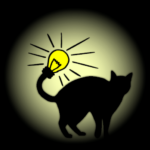
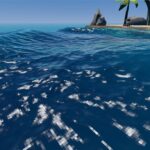
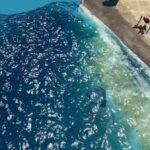
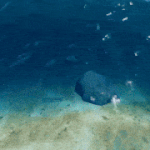

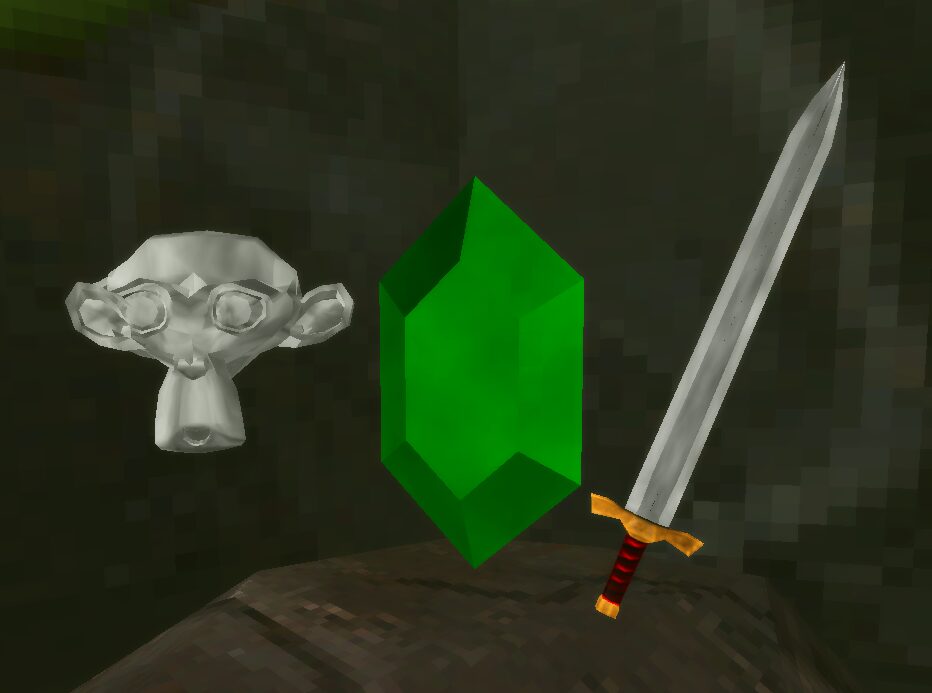
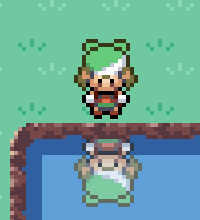

The shader isn’t working correctly. there is a radius where the water looks fine and after that half the mesh is red and half is blue. I saw that if I increase the foam mask size the red half blue bug kinda disappears but it increases the foam scale.
Did you set up a foam mask with a viewport texture? If not, that might be the issue. If you have, I’m not sure what exactly would be causing that. That radius is so that the foam doesn’t repeat but if it’s causing the issues, its on like 297. Comment out that if statement but not the lines inside it and it won’t check for that anymore, see if that does anything. Also are you on Linux? I had a different but possibly related bug exclusive to linux that I believe was due to improper drivers but I was never able to fix it.
I’ve done some testing and may have found a fix, it seemed to fix the Linux bug i was having. comment out the: if (foam_m > 0.01) if statement on line 305, but keep the stuff inside it. I’ll edit the shader to reflect this.
I am not on Linux but it works. Thx
I have another question if you don’t mind. I had a shader that I could move with the player and make like an endless ocean effect even if the mesh wasn’t that large but if I try it with your shader it seems like the waves move with the movement of the player faster than the speed of the player. Like just a little bit of movement from the buoyancy makes the ocean waves move at lightning speed.
You can move the mesh with the player however you need to round its position to a multiple of the size of your subdivisions. So for instance if the quad size on the water is 0.5m, make sure to always round its position to the nearest 0.5m increment. I have mine set to move 4m at a time in the sample project and it works pretty well.